When selling at Walmart, pricing is a crucial part of an effective Walmart marketing strategy. Walmart pricing strategy management couldn’t be the same for retailers because the house started to encourage higher-priced items. Speaking more of it, the greatest factor behind this “shifting” comes down to shipping issues.
The biggest dilemma for online retailers now is how to maneuver their pricing strategy on this top-selling platform under the upward trend created and still attract customers. But not to worry since you are about to discover:
Let’s now get the ball rolling!
Walmart Pricing Overview: What Makes Walmart Attractive to Sellers?
From its humble beginning to redefining retail globally, Walmart certainly goes a long way. What make Walmart a top marketplace sellers are probably its long-term commitment to low-priced items and optimized supply chain that conducts streamlined fulfillment. However, we will focus on Walmart pricing strategy in this article.
You might be interested in a detailed guide on Walmart SEO to enhance your product visibility, optimize listings, and boost your overall performance on this marketplace.
Walmart’s low price commitment and its impacts
Among Walmart’s competitive strategies against other giants such as Amazon or Target, being the low-price promoter has made an impact. Below is a glance at Walmart’s pricing in particular
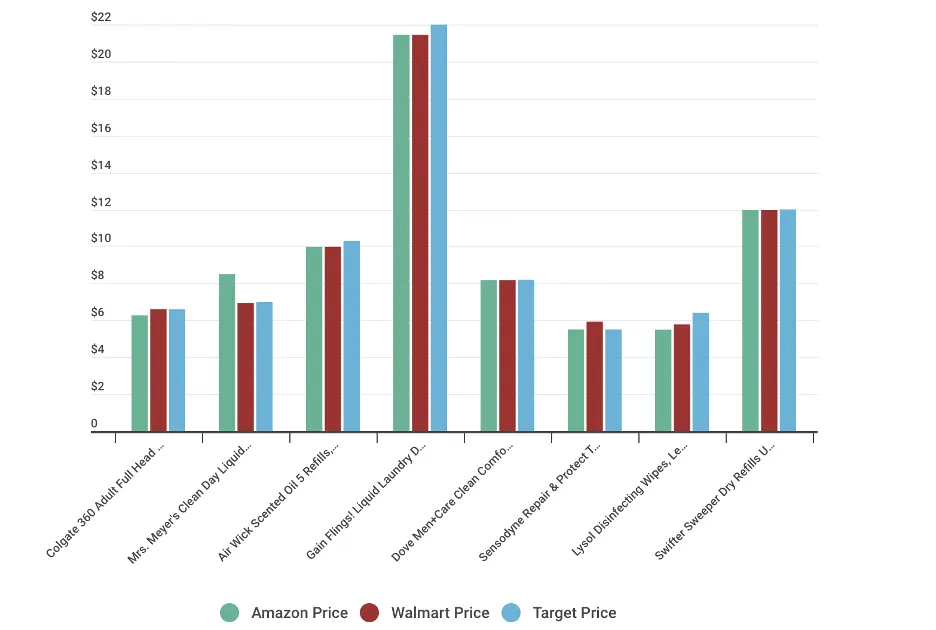
According to key insights from the 2022 Walmart vs Amazon report, the Walmart low prices strategy was strengthened in 2022 and resulted in the house’s tremendous purchase rates in groceries. Besides, Walmart’s net sales reached beyond $150 million.
These figures undoubtedly showed Walmart’s potential toward e-sellers, notwithstanding the eCommerce dominance of its competitors, one of which Amazon exemplifies. With such impressive achievements, Walmart is predicted to generate $3.4 billion in eCommerce net sales by 2025. This is exactly why the marketplace should be added to your sales channel list.
The Analysis of 3 Walmart Pricing Strategies
As promised, we will now go into detail about the three major Walmart pricing strategy analyses. They include Everyday Low Price, Market-oriented, and Fixed-rate Subscription pricing. Here are our explanations on each.
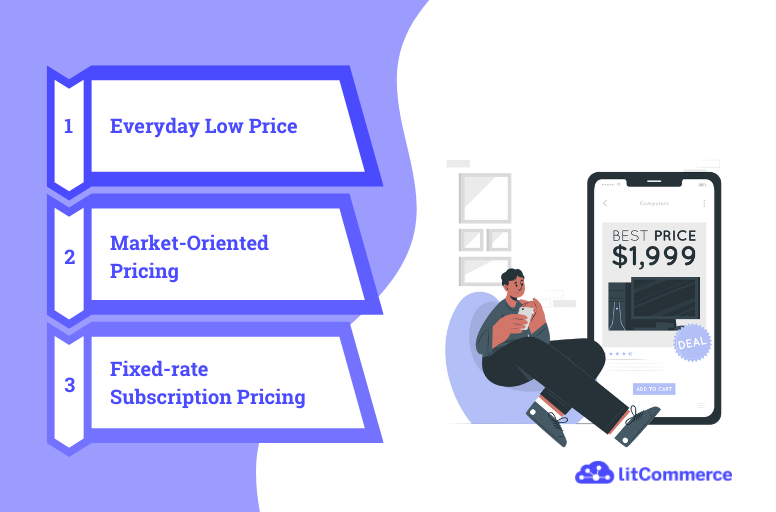
Everyday Low Price
Everyday Low Price (EDLP) is a pricing policy or strategy whereby a low price is initially set for an item and maintained, regardless of sales promotion activities (special discounts or holiday seasons).
Are Walmart everyday low prices actually effective? Yes, they definitely do! In fact, the idea of always getting the best deals influenced remarkably customers’ purchase decisions and repurchase rates.
The EDLP strategy remains Walmart’s core pricing ideology since it helps the marketplace increase sales volume consistently. Why let them wait until discount days when they can shop every day? Adding to that, Walmart doesn’t have to adjust pricing when promotion days come.
Another rationale behind this pricing strategy of Walmart is that retailers don’t have to invest in discount activities due to the fixed lowest pricing in the existing market. When operating under the EDLP strategy in the long run, Walmart has truly become a successful business model.
With that being said, the disadvantage of the EDLP policy is it solely emphasizes sales volume. The mechanism of EDLP pricing is to generate profits from excessive sales. Hence, Walmart has been dealing with low-margin profit when using EDLP, not to mention, this policy cannot apply to all categories.
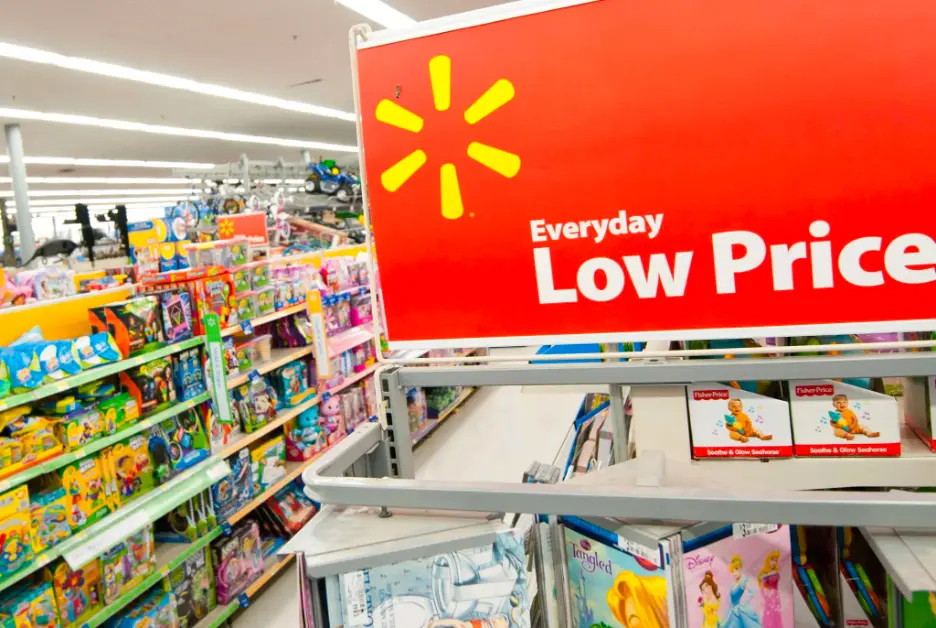
Market-oriented pricing
Continuing our analysis of Walmart pricing strategy to become the low-price leader, let’s take a close glance at the market-oriented pricing.
The market-oriented pricing strategy (also known as market-based) operates on the mechanism of deciding items’ prices based on market factors, whereby competition and demand take the lead. If there is a huge demand for one product, for instance, a pricey cost is inevitable. Additionally, market-based pricing is muchly influenced by competition when it comes to the final shot.
Moreover, Walmart must also consider the manufacturing costs and future trends to decide the final price. As Walmart applies the market-oriented pricing strategy, it must understand consumers’ perspectives before launching its products.
Fixed-rate subscription pricing
The analysis of Walmart pricing strategy getting it to sustain momentum surely can’t go without the fixed-rate subscription (or so-called flat-rate). As a contributor to Walmart’s low price commitment, the fixed-rate subscription policy means customers can purchase all products having the same feature at one cost only.
This flat-rate pricing policy does not apply to all brands, but it works for Walmart and helps the marketplace achieve its success story partially. Although the third Walmart pricing policy still triggers the low-margin profit, it could not outplay Walmart’s excessive net sales.

6 Strategies to Help You Start Selling on Walmart
Struggling with pricing strategies absolutely not an odd story to share, especially when you are new to Walmart. Don’t freak out yet, because the 6 effective ways to manage your Walmart pricing strategy and drive more sales are right below. Check them out now!
#1. Deliver on the Everyday Low Price (EDLP) promise
Everyday Low Price is not simply a Walmart cost strategy, it is an ideology. The EDLP depicts Walmart’s spirit – Save Money. Live Better. Moreover, by following the Everyday Low Price strategy, new e-sellers can easily gain satisfied customers and a greater repurchase rate.
What’s more, new e-sellers need to work on customers’ trust. By committing to an EDLP policy, providers can increase shoppers’ certainty about their products and decrease the desire to purchase from competitors. Therefore, as you set pricing for your Walmart products, don’t forget to deliver on the EDLP promise.
#2. Achieve the Buy Box
The second strategy to draw greater attention and drive more conversion is to achieve the Buy Box winning list. But what is exactly the Buy Box and why is the Buy Box as you sell products to Walmart?
Answering the first question, the Buy Box features offers that bring the best values and shopping experience. In addition, according to Forbes, Walmart Buy Box grants you boosted visibility, enhanced customer trust, and exclusivity. These factors are game changers without a doubt.
So how to win the Buy Box? For any e-retailer who wants to achieve the Walmart Buy Box, there are several aspects to improve.
- Item price: Any e-shopper would want the best deals on whatever marketplace, and Walmart embraces this fact. Should you desire to win the Buy Box, it is advisable that you manage your best Walmart sellers and pricing strategy so that it keeps up with the rivals and appears valuable for the money spent.
- In-stock rate: In-stock rate refers to your inventory. Ensure that the inventory always stays updated, notably for fast-moving items. You surely don’t want to lose a customer because of prolonged updates.
- Shipping cost and speed: Shipping factors contribute significantly to Walmart’s upward pricing trends because shipping costs make harsh turns for a business model like Walmart. Selling a low-priced item with high shipping costs is evidently a loss than a gain.
However, to achieve the Buy Box, you’d better optimize the shipping cost and speed. As a matter of fact, Walmart encourages sellers to offer free shipping regardless of shipping methods. Considering this matter, you might want to read more about Walmart shipping costs.
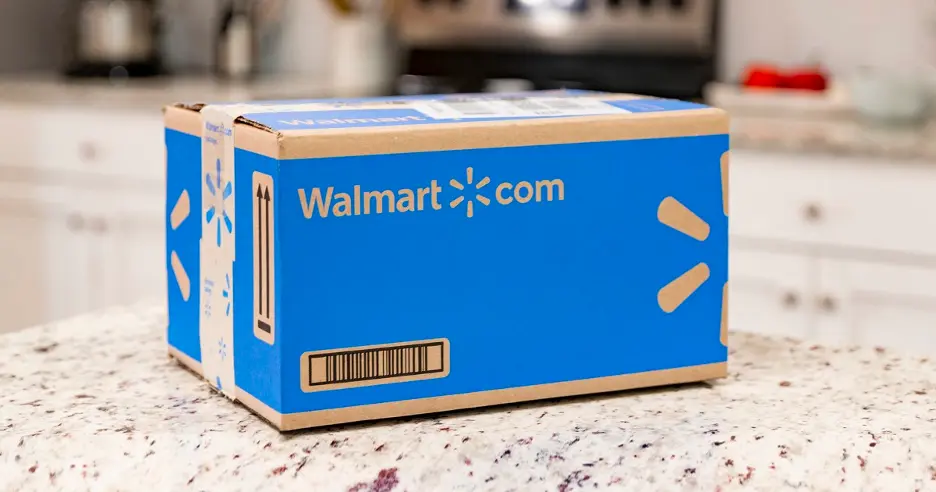
#3. Invest in great deals
Even for marketplaces with low-price commitments, such as Walmart, sellers should invest in their deals by setting strike-through pricing and adding promo flags, including Reduced Products or Clearance. With attractive deals, online stores can expect high-level profits based on their increased traffic. Hence, why not add this one to your Walmart selling strategies?
Notes: When creating strike-through deals, combining them with other strategies (Flash Sales, Loyal Customer Discount, and so on) is highly recommended.
#4. Troubleshoot pricing catalog issues
When selling on Walmart or other marketplaces and platforms, an e-retailer needs to be proactive toward pricing adjustments. In the situation of Walmart, you will troubleshoot catalog issues relating to pricing and maneuver any change via the Pricing Opportunities Dashboard.
As you use the Dashboard, your pricing will display along with other competitive offers available on Walmart. Furthermore, you will then be updated whenever your items leave the Buy Box list, as well as potential purchases you might otherwise miss. If your pricing is losing the game to competitors, you can make adjustments to items individually and get your store back in the race.
In the opposite case, should your prices:
- Stand a chance against others barely.
- The market conditions have shifted, and your products accidentally reach unacceptable ranges (listed in the Walmart Pricing Rules and Unpublishing).
It is time to troubleshoot using the Unpublished Item Dashboard by Walmart.
#5. Apply the Repricer
The Repricer is a powerful tool as you conduct your Walmart pricing strategy. It helps to adjust products’ pricing automatically. This tool also works with other eCommerce marketplaces such as Amazon or eBay, just in case you are a multi-channel e-retailer.
There are three presets offered by the Repricer. They are External Price, Buy Box Price, and Competitive Price.
- External Price: This first preset will assist you to meet or beat the prices on Walmart and other eCommerce marketplaces.
- Buy Box Price: This Buy Box Price preset is responsible for automatically updating your items’ prices so that they can beat competitors in the Walmart Buy Box.
- Competitive Price: Repricer’s final preset combines the logic of the previous two and calls the last shot.
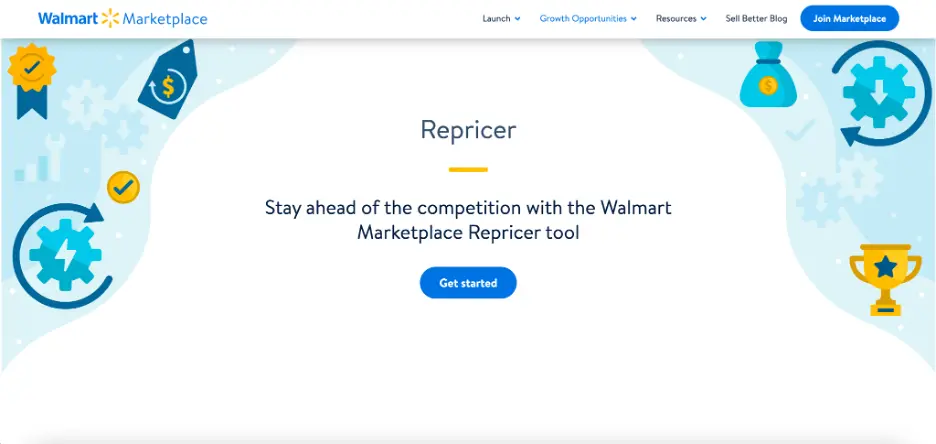
#6. Focus on customer service and reviews
Apart from managing your Walmart pricing strategy when selling on the marketplace, remember to pay attention to customer experience. Happy customers leave positive feedback. As a matter of fact, great feedback can lift your sales volume by 18% and drive more conversion. Customer experience will affect the repurchase rate, so why risk creating inconvenience then?
Walmart Pricing Strategy – FAQs
- 1. Why is Walmart so cheap?
The reasons why Walmart is so cheap are the optimized supply chain, low-cost operation, well-built relationship with their partners, powerful bargaining, and enormous sales volume.
- 2. What strategy did Walmart use?
Walmart uses EDLP (Everyday Low Price), Market-oriented, and Fixed-rate pricing strategies, among which the EDLP is their core pricing ideology.
- 3. How is Walmart making money by pricing below cost?
Walmart’s EDLP business model allows them to make money even when selling at a below-cost price because of their sales volume. They do not make money from high-value items but cheap ones and follow pricing strategies that generate excessive profit levels in the long run.
Conclusion
Becoming a Walmart retailer means you are coming up against fierce pricing competition. But there are surely ways to manage your Walmart pricing strategy effectively. If you are new to Walmart, take your time to discover and get used to the supporting tools offered. And don’t forget to consider our suggested strategies.
We have more tips on business growth hacks on our Retail Blog and Facebook community. So don’t forget to follow us and stay updated! If you have any concerns within the eCommerce field, feel free to drop us a message.



